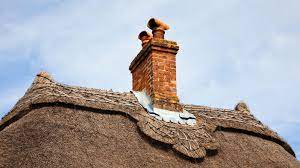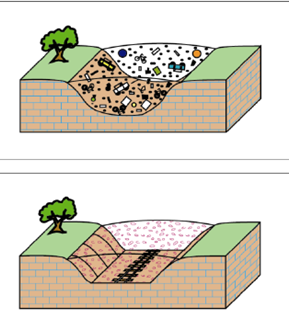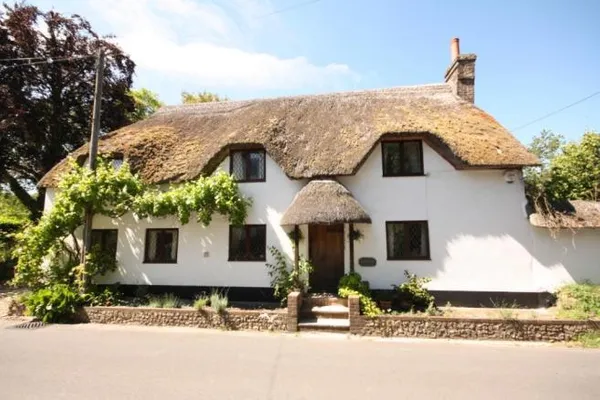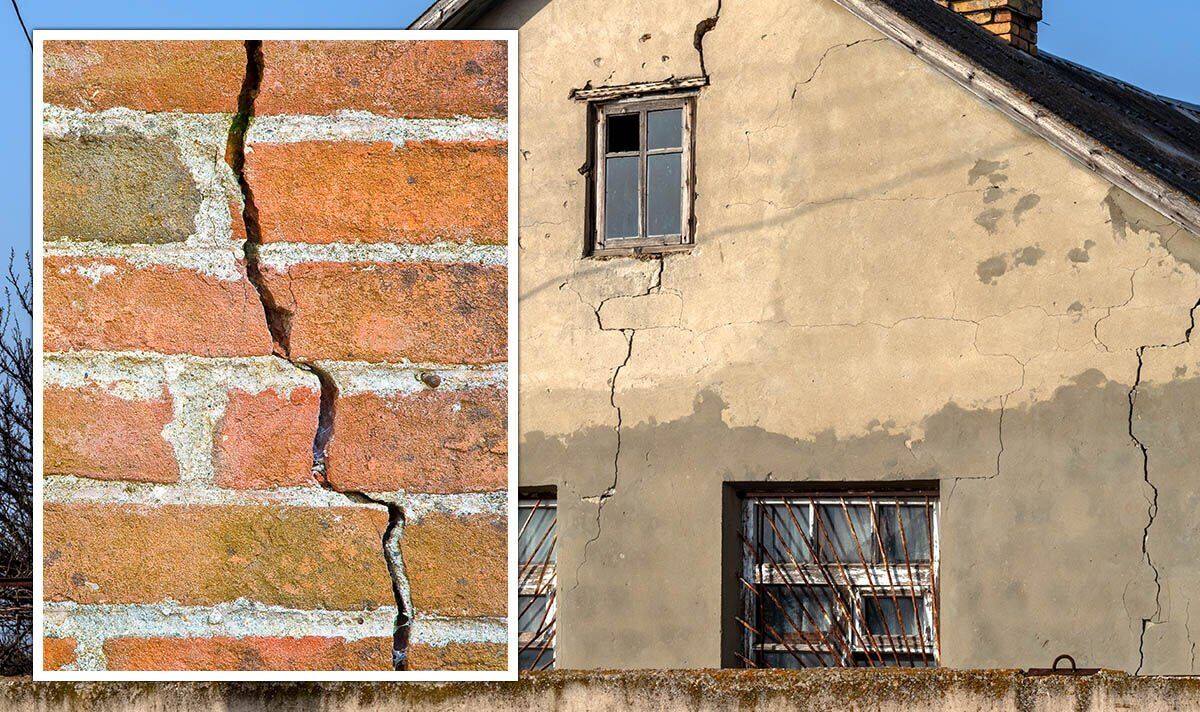Artificial ground, also known as made land is an area which has been previously excavated…

Thatch and chimneys
When carrying out a Level 3 Building Survey at a Listed thatched house in Chardstock our surveyor was concerned about the height of the chimney in relation to the thatch.
The top of the chimney pot must be at least 1.8 metres above the thatch. This regulation is in place to ensure that should hot embers exit the top of the chimney it is likely they will be carried away from the thatch with the up draught, therefore reducing the risk of sparks falling onto the thatch itself and potentially causing a fire.
However, due to many thatched buildings being Listed, a ‘common sense’ approach has to be taken because some of the restrictions by Local Authorities may not permit alterations of chimneys. In these cases it is best to take the advice of a specialist engineer that has experience with thatched properties. The most well-known approval body for heating engineers is HETAS https://www.hetas.co.uk/consumer-guidance-for-installations-in-thatched-properties/
It was thought that heat transfer from chimney bricks to thatch was a major cause of thatch fires. Thatchers and homeowners now understand better that this theory, although good in its time, was only a theory. Practically, thatch burns at just under 200 degrees. The chimney would have to be very hot for a length of time for the bricks to generate these hot spots and set the thatch on fire. The Burgoynes Forensic Investigation of Thatch Fires further confirmed the heat transfer theory to be less likely. More likely, chimney fires ejecting sparks which drop down onto the thatch or possibly a spark going through gaps in old mortar between the bricks will cause a thatch fire.
Other things to think about if you have a thatched roof:
· Have chimneys inspected regularly by a registered chimney engineer to ensure the liner and brickwork is good. A thatcher should check the hidden section when re-thatching.
· The chimney should be swept twice a year or quarterly if wood is burnt.
· Chemical flue cleaners are available to help remove and loosen tar deposits but care must be taken. They can be used before a chimney is swept to aid the cleaning.
· Spark arrestors are not recommended. This is because they can become clogged (either naturally or through lack of maintenance) restricting free flow of combustion gases and also becoming a fire hazard in themselves. If you cannot keep one very clean and clear then it will not work as it should and is more of a fire hazard.
· Appropriate liners to meet the regulations are required depending on the fire below your chimney. Professional advice should always be sought.
See (Building Control Approved Document J – https://www.planningportal.co.uk/info/200135/approved_documents/72/part_j_-_combustion_appliances_and_fuel_storage_systems
Sources include Thatch Advice Centre, HETAS, Thatching Advisory Services



